New converged solutions from HP Networking

Apparently, there is not a single IT company that would not appeal to the topic of convergence (integration) as a saving circle of the IT industry, without which it would, if it did not go to the bottom, then at least significantly slowed down the pace of development.
In recent years, the issue of convergence has been particularly acute and relevant in the field of telecommunications. It is the telecom region that has become a real testing ground for the development of many new hardware solutions, technologies, protocols that would allow a little (or dramatically) to reduce costs and time to implement them, reduce operating costs, ensure the available resources are optimally loaded.
But is this a new topic of convergence, which has had time to get rid of the technical people? Let us turn to the quotation from the journal “Life and Communication Technology”: “What provisions do we come up with when we outline ways to reorganize (including new buildings) wire communications? First of all, its design, reorganization should be fully integrated for telegraph and telephone, and first of all this combination of design and device should be on the lines. The network of telegraph and telephone wires should be a single wire communication system ... Now this complete unification is not only possible, but also essential, starting from the lower network, which should, as a rule, be designed for the possibility of both telephone and telegraph service. ” . If one does not pay attention to the mention of an archaic type of communication, such as the telegraph and a dubious transmission medium in the form of wire communication, one might think that this is a real or relatively recent time. But no, this article is over 90 years old and these words belong to the then deputy. People's Commissar of Post and Telegraph of Russia .. Lubovich.
')
Thus, the question of unification and integration of several solutions or technologies into one excites the minds for a very long time.
For a very long time, HP has been actively developing and releasing converged business solutions and sees in it a great, if not to say, bright future. Many CIO and IT specialists are still cautiously considering the possibility of transition from traditional forms of communication to new and promising ones. But let's remember at least how the era of IP telephony began. It has been perhaps a dozen years since the first tests of voice transmission over IP before IP telephony began to be massively introduced into grocery networks, proving its right to exist.
So why all this long introduction?
HP has released new converged modular switches for data center and campus networks! And I am glad to share this good news with you, and, at the same time, tell a little about it.
We are talking about two new models of the HP FlexFabric 5930 series. This series already exists on the market for some time and was introduced until recently with one device - HP FlexFabric 5930 32QSFP + Switch - a compact single-unit switch with 32 40 Gbe ports and a non-blocking switching matrix. This device is interesting in that it was the first switch in its time in the HP line (and one of the first on the market) with hardware support for VXLAN and NVGRE.

These switches are positioned primarily as top of rack in large implementations, or the level of distribution or core for small data center sites. However, for campus networks, these devices can also be used as a core, since there is a complete set of protocols for L3 traffic processing, PBR, Multicast, QoS, VRRP, stacking up to 9 devices with control plane, VRF-lite, resource virtualization of the MCE switch , a wide selection of SFP transceivers, etc.
But today it’s not about him, but his two new brethren: HP FlexFabric 5930 2QSFP + 2-slot Switch and HP FlexFabric 5930-4Slot Switch.


Brief performance characteristics of both devices:
| HP 5930 -2Slot + 2QSFP + Switch | HP 5930-4Slot Switch | |
| Number of module slots | 2 | four |
| CPU | 1GHz, dual core | 1GHz, dual core |
| Ram | 4G | 4G |
| Flash | Nand: 1G Nor: 8M | Nand: 1G Nor: 8M |
| Packet memory buffer (bytes) | 12M | 12M |
| MAC Address Table | 32K min / 288K Max | 32K min / 288K Max |
| ARP table | 16K min / 120K max | 16K min / 120K max |
| Number of IPv4 routes | 16K min / 120K max | 16K min / 120K max |
| Maximum number of VLAN interfaces | 2K | 2K |
| Performance | 720Gbps | 1.28Tbps |
| Bandwidth | 1071Mpps | 1428Mpps |
| Delay (64byte / us) | 40GE: <1.2us | 40GE: <1.2us |
You can see that the number of MAC, ARP, IP table entries may vary. It depends on which switch mode is used. Depending on the needs and objectives, we can allocate a larger resource for storing L2 information to the detriment of L3, or, reducing the L2 resource, allocate more for L3. By default, entry mode 0 is active.
| Entry mode | MAC address table | ARP or ND table | Routing table |
| 0 | 288 KB | 16 KB (ARP table) or 8 KB (ND table) | 16 KB (IPv4) or 8 KB (IPv6-64) |
| one | 224 KB | 56 KB (ARP table) or 28 KB (ND table) | 16 KB (IPv4) or 8 KB (IPv6-64) |
| 2 | 160 KB | 88 KB (ARP table) or 44 KB (ND table) | 16 KB (IPv4) or 8 KB (IPv6-64) |
| 3 | 96 KB | 120 KB (ARP table) or 60 KB (ND table) | 16 KB (IPv4) or 8 KB (IPv6-64) |
| four | 32 KB | 16 KB (ARP table) or 8 KB (ND table) | 128 KB (IPv4) or 64 KB (IPv6-64) |
Next, we will see from which blocks these devices are made.
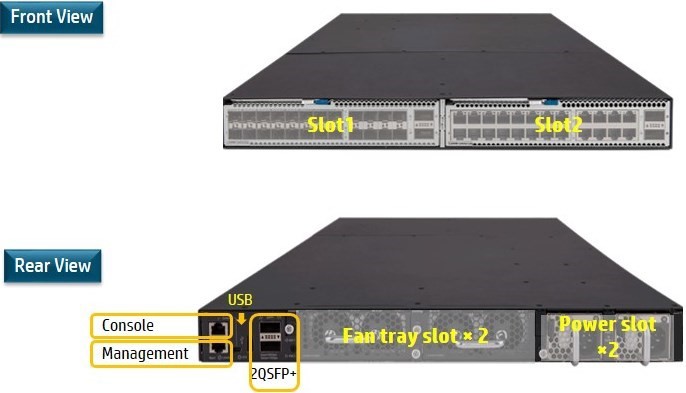
The first device on the front side has 2 slots for interface modules (I will tell about them below). Those. Initially, the slots are empty, and the modules are an option that the user defines himself depending on the set technical requirements. Each integrated module is connected via bus to the ASIC processor at a speed of 320 Gbit / s. This bandwidth provides non-blocking switching for 8 40 Gb / s ports or 24 10 Gb / s + 2 40 Gb / s per slot.
On the back of the switch, we see that the power and cooling modules are duplicated. It is possible to choose the direction of cooling depending on the location of the hot-cold corridor, as well as the type of power supply - AC or DC with a power of 650 W.
Also, there are 2 ports at 40 Gbit / s each (for organizing a stack or as uplink ports). These two ports have their own 80 Gbps ASIC connection bus, which also gives wire-speed.
To the left are the OOB control port, console port, and USB port.

The second device is very similar to the first. Presented already in the form factor 2 RU, there are 4 slots for optional interface modules, the number of power supplies is increased to 4, the cooling modules are optimized for increased internal space, 2 fixed 40 Gbe ports no longer exist. Stacking and uplinks should be organized through standard modules from the front.

The dual-unit version has a more efficient processor, otherwise the architecture is identical.

The second device is very similar to the first. Presented already in the form factor 2 RU, there are 4 slots for optional interface modules, the number of power supplies is increased to 4, the cooling modules are optimized for increased internal space, 2 fixed 40 Gbe ports no longer exist. Stacking and uplinks should be organized through standard modules from the front.
At its core, we can consider these switches as a modular switch with a passive backplane. The big advantage of such switches is the ability to individually select interfaces with a given set of characteristics. What interface modules are currently available:
• HP 5930 24p SFP + and 2p QSFP + Mod - 24 universal SFP + ports and 2 QSFP + ports for connecting either 1/10 GbE or 40 GbE respectively;

• HP 5930 24p SFP + and 2p QSFP + Mod w Msec - a module similar in port capacity, but with hardware support for MACSec;
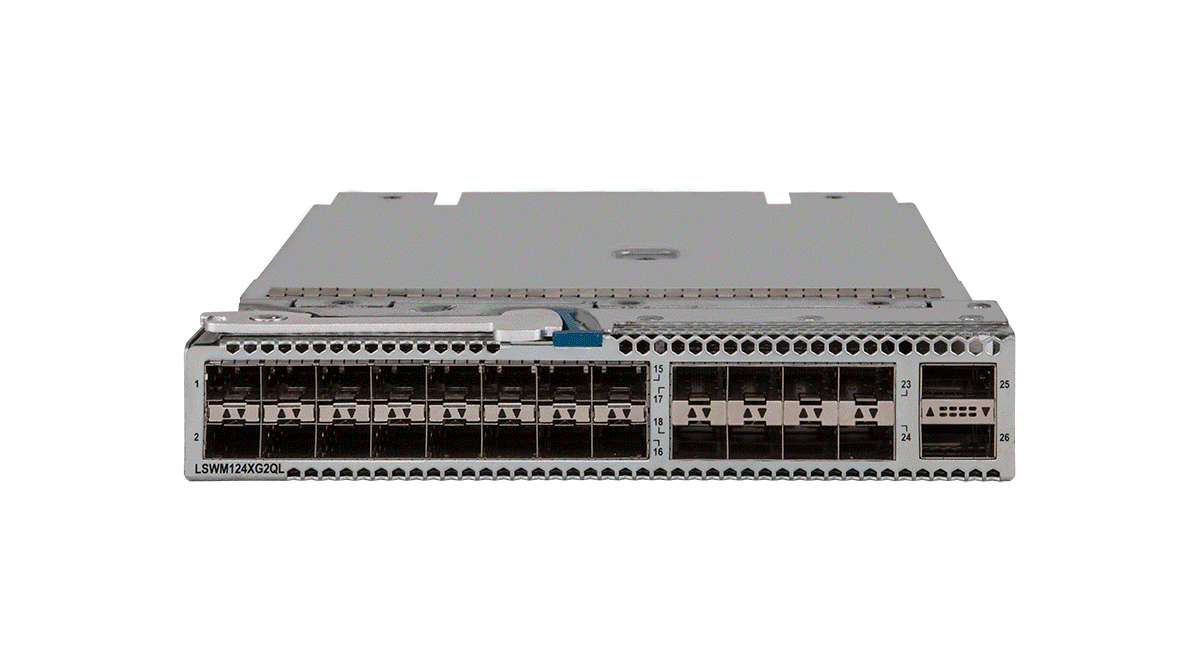
• JH184A HP 5930 24 CP and 2p QSFP + Mod - 24 ports that can be used as 1/10 Gb Ethernet, or as 4/8 Gb Fiber Channel, and no additional licenses are required to enable native FC. Each port is configured individually, i.e. can be either Ethernet or FC. On similar switches, competitors have to allocate a group of ports at once, which will work in one of the modes, which is not very flexible. As well as for the 5900CP switch, universal SFP + transceivers are available that are suitable for connecting LAN devices and SAN devices (H6Z42 HP 16Gb FC / 10GbE 100m SFP + Transceiver);
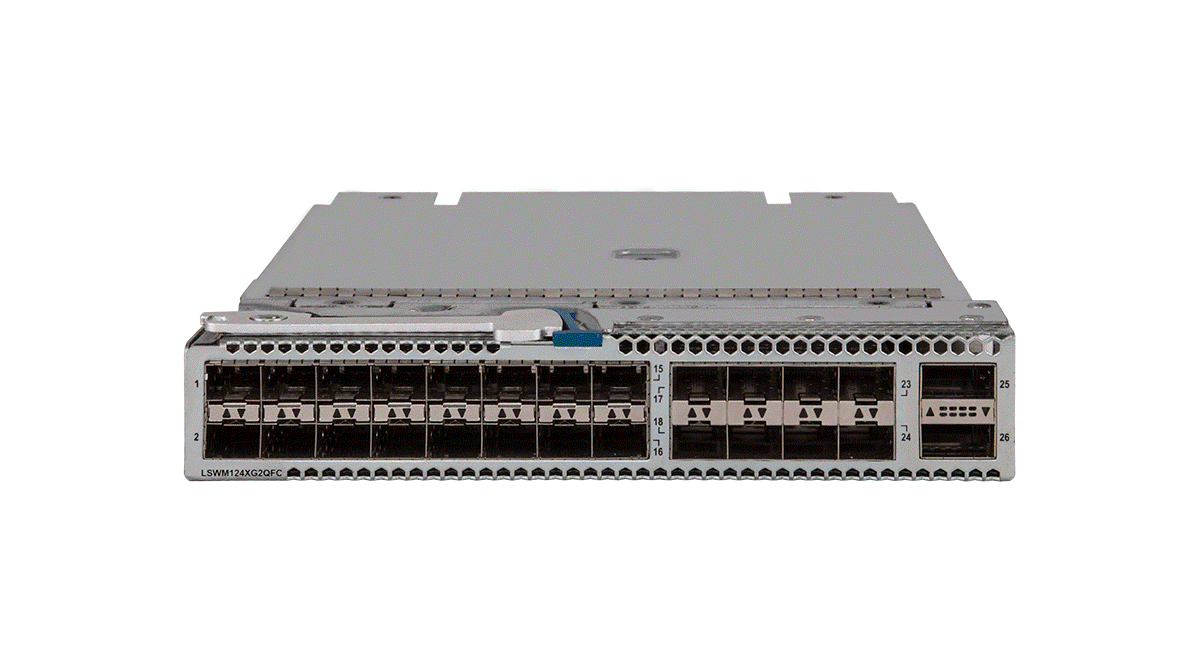
• HP 5930 24p 10GBase-T and 2p QSFP + Mod - 24 copper 10GBase-T ports, as well as 2 QSFP +;
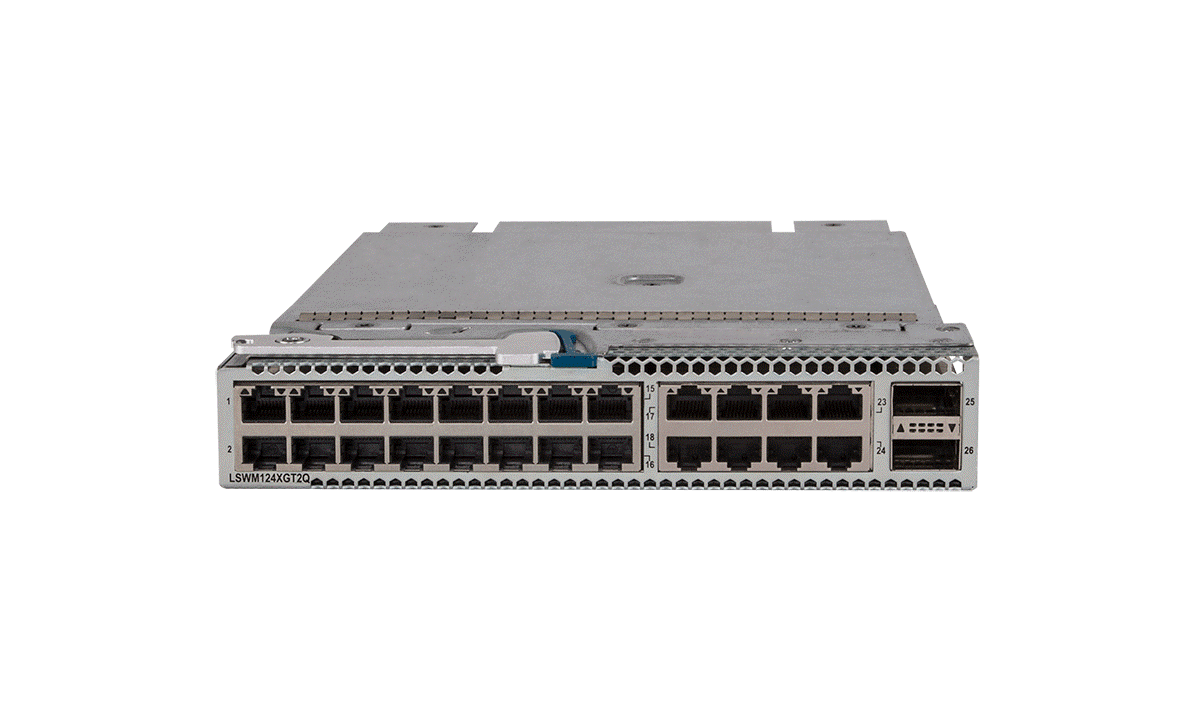
• HP 5930 8-port QSFP + Module - and finally a card with 8 QSPF + ports
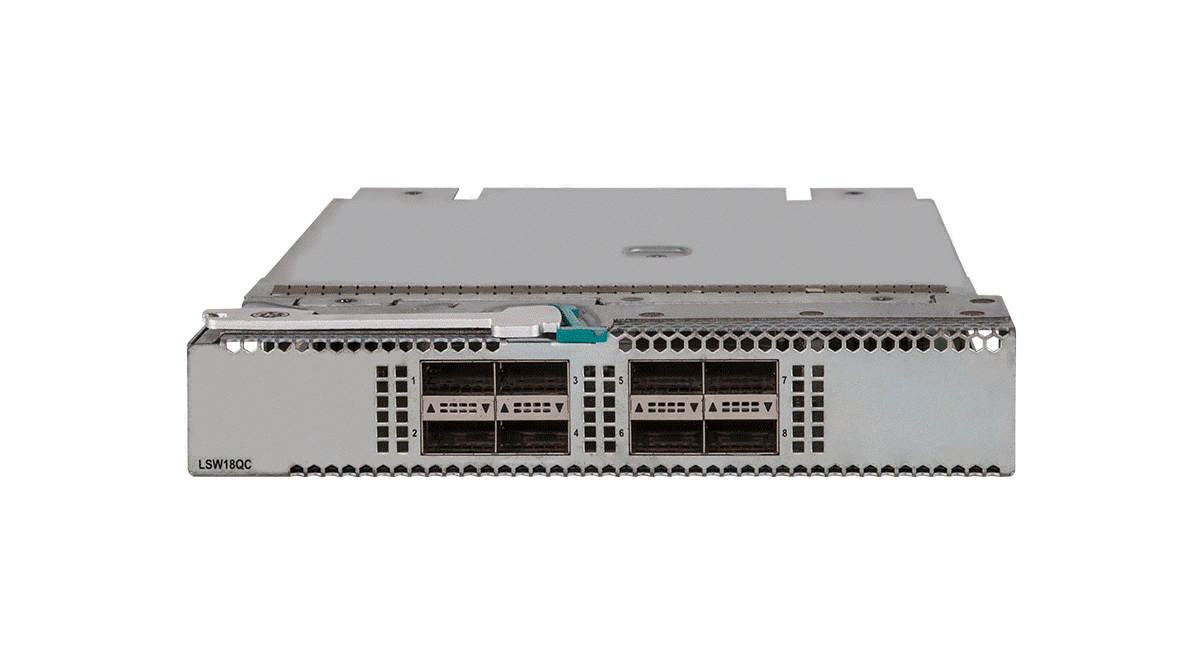
It is worth noting that for 40G ports 3 types of DAC splitter are available - a cable designed to separate one 40G port into 4 10G. From the CLI, these interfaces will look like standalone 10G physical ports, with corresponding configuration options. But it should be borne in mind that not every 40G port can work in this mode. The picture shows such ports for all interface modules and switches of the 5930 series. This is a hardware limitation associated with the switch architecture. This is worth keeping in mind when designing.
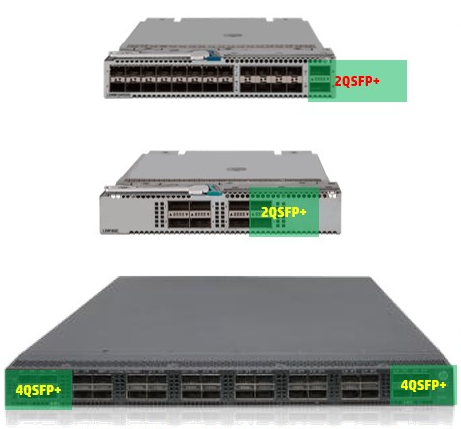
The physical characteristics of the switches certainly mean a lot, but in the end, it all comes down to what the switch can do in terms of software tools. And he can do a lot, because the device was originally developed for the Comware v7 operating system, which differs from the previous version in the modularity of the architecture, isolating the memory allocated to the processes, so that the collapse of one process does not affect others, the ability to use ISSU, SDN and OpenFlow 1.3.1 support , converged protocols FCoE, DCB and much more. All supported protocols list here does not make sense, but with the capabilities of the device can be found in the datasheet or release note .
Nevertheless, I will give some examples of using these switches. The main differentiator is the fact that the devices are convergent and can connect to themselves as standard Ethernet 1 / 10Gb, and Native FC and FCoE. FC requires an HP 5930 24 CP and 2p QSFP + Mod, while any interface modules are suitable for Ethernet and FCoE. Thus, we can significantly save both on capital costs, buying only one or a couple of convergent switches for fault tolerance, and operating theaters, saving on service support, power consumption, rack space, cooling. Also it should be taken into account that administrators will deal with only one physical network instead of LAN and SAN separately.
As the switches expand by modularity and stack up, we can always be sure that we can increase the capacity of the ports if necessary without replacing all the hardware and stopping the service.
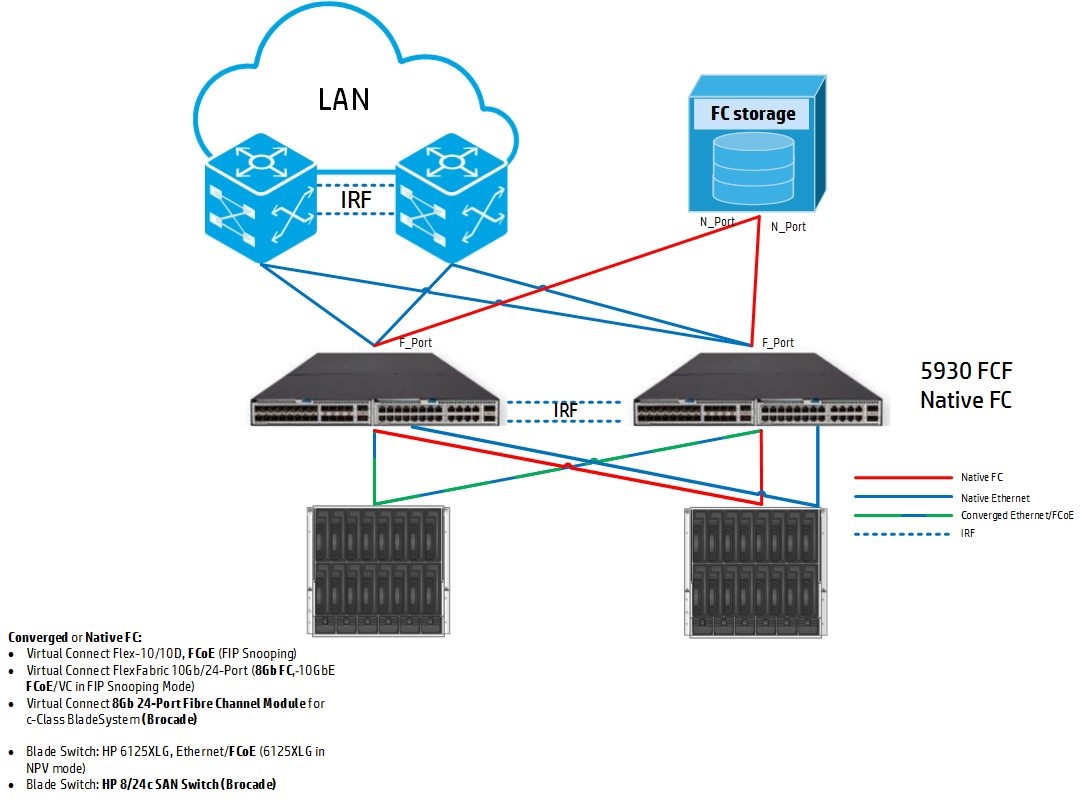
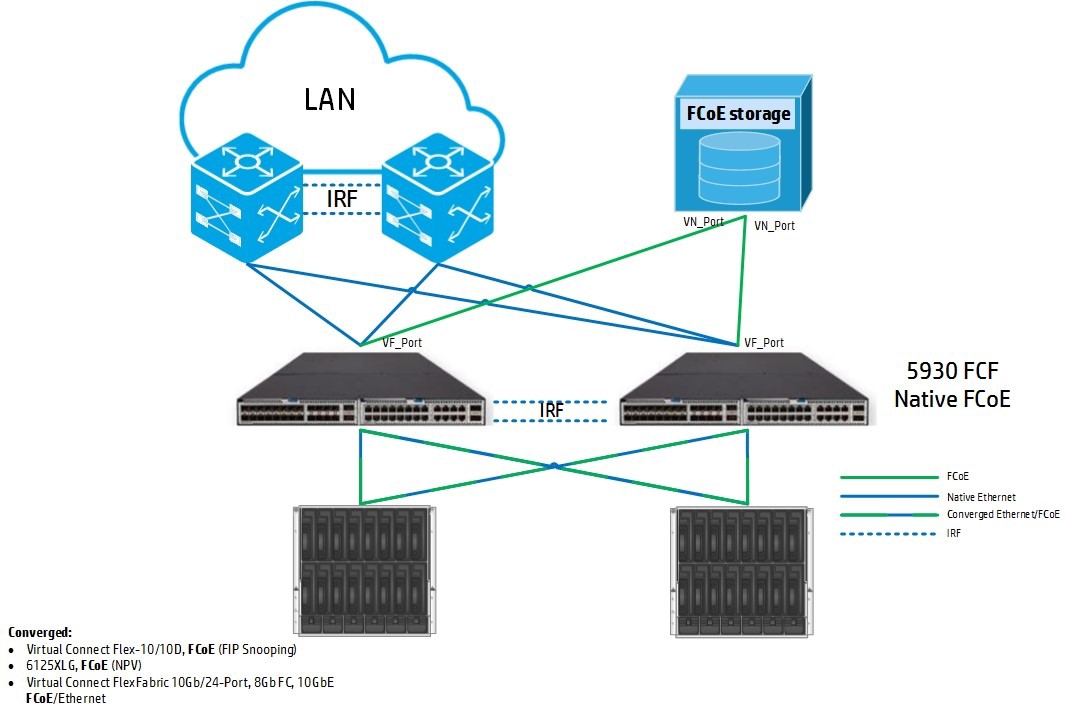
By the way, the ability to use convergent ports does not carry any hidden cost in the form of additional licenses (unlike competitors), as well as all the other features of this switch. It's simple - buying a device, the client receives the entire list of opportunities laid out by the developers in the network operating system. HP tries to follow this principle in most of its other network solutions.
Returning to the interesting features of this device, it is worth mentioning the now actively mastered VXLAN technology. About a year ago, the 5930 32QSFP + Switch switch (the one that is not modular) became the first device in the HP lineup with hardware support for VXLAN (this requires a specialized chipset). The further development of this line has expanded the number of compact access devices with the support of this technology, i.e. 2 new modular switches support VXLAN VTEP and can terminate on themselves up to 4K tunnels. Today it is difficult to imagine the work of a modern data center without using various virtualization techniques of computing resources. The tendency towards maximum virtualization and the rapid growth of hosts within the framework of the average data center has led to the fact that traditional patterns of traffic structuring at the L2 level (such as VLANs) have become of little use due to the low scalability. This, in turn, was the impetus for the emergence of technologies such as VXLAN or NVGRE. They, of course, have both pluses and minuses, but, nevertheless, the development trends of the industry and the market show that the need for such technologies is essential. Read more about VXLAN here .
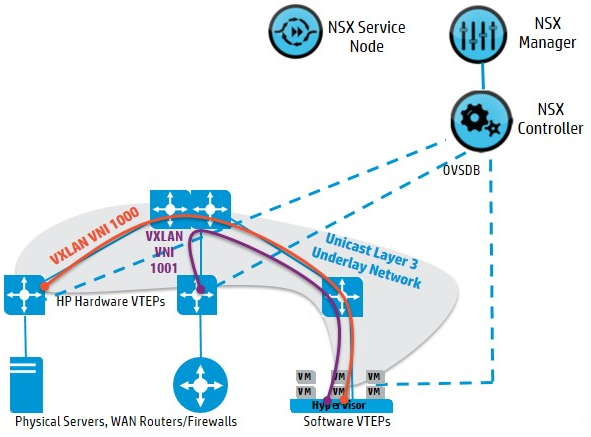
Thus, we organically fit into the structure of overlay networks, allowing the interaction of physical and virtual media.
The next, noteworthy, EVB / VEPA technology. In short, it can be found on the link . And if in a nutshell, the protocol is based on the open standard IEEE 802.1Qbg, which allows network administrators to better see and understand what is happening inside physical servers in the process of exchanging data between virtual machines. Since the network traffic between two virtual hosts within a single physical server is nothing more than the movement of data from one RAM area to another, the ability to apply some policies and perform advanced monitoring is quite difficult. Of course, there are a lot of new products on the market that implement one or another functionality (for example, virtual firewalls or traffic analyzers), however, many manufacturers, in particular HP, believe that the server should be involved in computing, and traffic processing should be left network devices. So, EVB / VEPA allows us to “pull” traffic between virtual hosts into the external network, apply any policies and rules (be it QoS, access lists, DPI or something else), and then return this traffic back to the server and route it to the original destination host. Thus, we can unload resources of the servers associated with the application of policies to network data, making it completely transparent to all participants in this process.
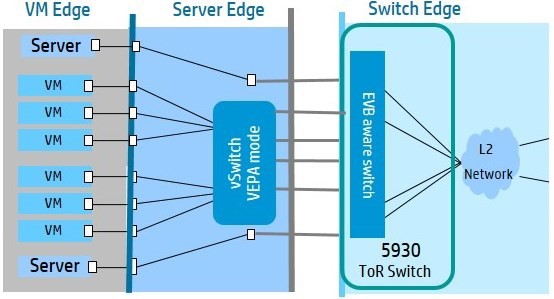
Another technology that deserves mention, and which is contained in the devices in question, is TRILL. A brief overview of this protocol, as well as other modern L2 routing protocols, as well as trends in this area, can be found in our HP FlexFabric Reference Architecture: Data Center Trends . In addition to TRILL, the switches also support the older Shortest Path Bridging IEEE 802.1aq protocol. Both protocols support up to 8 ECMP routes (Equal Cost Multipath), which in principle is more than enough for data centers of any scale. Thus, we get rid of idle links, if we use the good old xSTP, evenly load the available resources and ensure stable and stable operation of the network as a whole in case of failure of one or several traffic paths. The rate of convergence is again significantly higher than traditional L2-level technologies, which allows us to minimize or even eliminate packet loss in case of rebuilding the route tree.
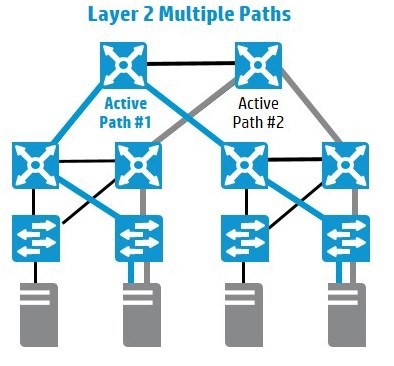
We hope with this solution to take another step to expand and strengthen its product portfolio for data center networks and campus networks, to allow customers to make their choice more flexibly when building truly converged networks.
Source: https://habr.com/ru/post/259287/
All Articles